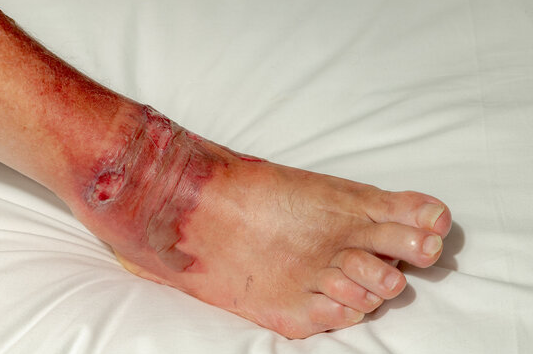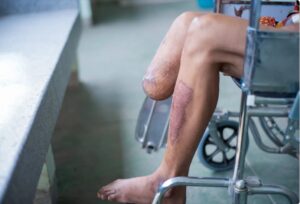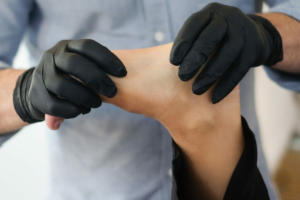Burn injuries can happen unexpectedly, and knowing how to properly care for them is crucial to prevent complications. Among the different types of burns, second-degree burns require special attention because they affect deeper layers of the skin and can be painful. Understanding 2nd degree burn wound care is essential to promote healing, avoid infections, and reduce scarring. For the best treatment and guidance, Kalingap Wound Care Clinic offers expert care and support to ensure optimal recovery.
What is a 2nd Degree Burn?
A 2nd degree burn, also called a partial-thickness burn, involves damage to both the outer layer of skin (epidermis) and the underlying dermis. These burns often result from contact with hot liquids, flames, chemicals, or severe sunburns. They are characterized by redness, swelling, blistering, and a wet or shiny appearance. Pain is usually intense due to nerve exposure. Proper 2nd degree burn wound care is needed to manage these symptoms and support healing.
Classification of 2nd Degree Burns
There are two main types of 2nd degree burns: superficial partial-thickness and deep partial-thickness burns. Superficial burns affect the upper dermis, heal faster (usually within 2-3 weeks), and may leave minimal scarring. Deep partial-thickness burns extend deeper into the dermis, heal slower, and have a higher risk of scarring and pigmentation changes. Knowing the type of burn is vital for effective 2nd degree burn wound care, and professionals at Kalingap Wound Care Clinic can accurately classify and treat your burn.
Immediate First Aid for 2nd Degree Burns
Quick and correct first aid is the first step in 2nd degree burn wound care. Immediately cool the burn with running cool (not cold) water for 10 to 20 minutes to reduce pain and swelling. Avoid using ice or applying butter, oils, or creams at this stage, as these can worsen the injury. Do not pop blisters, as they protect the skin underneath. If the burn covers a large area, is on sensitive parts of the body, or shows signs of infection, seek professional help immediately. Kalingap Wound Care Clinic is equipped to provide emergency burn care and proper wound management.
Treatment Options for 2nd Degree Burns
For minor 2nd degree burns, home care includes gently cleaning the wound with mild soap and water, applying prescribed burn ointments such as silver sulfadiazine, and covering the area with a sterile, non-stick dressing. Pain can be managed with over-the-counter medications. For more severe burns, professional medical treatment may involve wound debridement to remove dead tissue, advanced dressings to maintain moisture balance, and antibiotics if infection is present. Kalingap Wound Care Clinic offers comprehensive 2nd degree burn wound care, including both outpatient and inpatient options, ensuring your burn heals properly with minimal complications.
Risks and Complications
Ignoring proper 2nd degree burn wound care can lead to infections, delayed healing, and permanent scarring. Infection signs include increased redness, swelling, pus, fever, and worsening pain. Scars may also limit mobility, especially if the burn is near joints. Additionally, pigmentation changes can cause cosmetic concerns. Early treatment and monitoring by experts at Kalingap Wound Care Clinic can reduce these risks and improve healing outcomes.
Recovery Tips and Best Practices
Supporting the healing of a 2nd degree burn requires more than just treating the wound. Keep the wound clean and dry, change dressings as advised, and avoid exposing the healing skin to direct sunlight to prevent discoloration. Nutrition plays a key role; a diet rich in protein, vitamin C, and zinc can speed up skin repair. Managing itchiness through gentle moisturizing and following scar prevention methods, such as silicone gel sheets or gentle massage, is also beneficial. For personalized advice and follow-up care, Kalingap Wound Care Clinic provides expert guidance through every stage of your recovery.
When to See a Specialist
Certain burns require specialist care, especially if they affect sensitive areas like the face, hands, genitals, or joints, or if they occur in children or elderly individuals. Deep burns, large affected areas, or wounds showing signs of infection or delayed healing should be evaluated by a burn specialist. Kalingap Wound Care Clinic offers access to highly trained clinicians and advanced treatments designed to promote healing, reduce scarring, and restore function.
Preventing Second-Degree Burns
Prevention is always better than cure. Be cautious in kitchens and bathrooms where hot liquids and surfaces pose burn risks. Use protective gear when handling chemicals or fire. Educate family members, especially children, about fire safety and first aid. Having quick access to a trusted clinic like Kalingap Wound Care Clinic for immediate evaluation can make a significant difference if burns occur.
Takeaway
Mastering proper 2nd degree burn wound care is essential for reducing pain, avoiding complications, and ensuring smooth recovery. Whether your burn is minor or requires specialized treatment, timely action and expert care make all the difference. Trust Kalingap Wound Care Clinic as your go-to center for professional burn treatment and comprehensive wound management. Prioritize your health by seeking their help to receive the best possible care and support on your path to healing.




